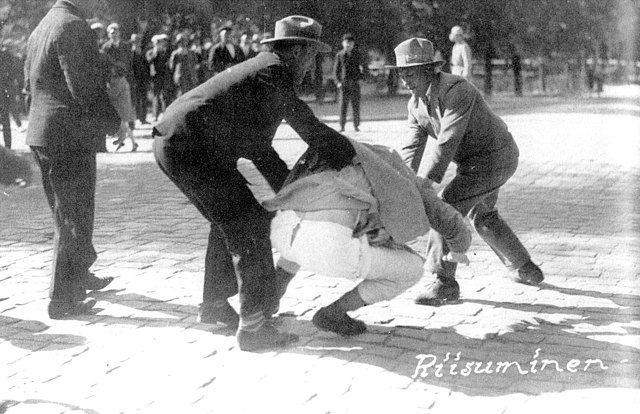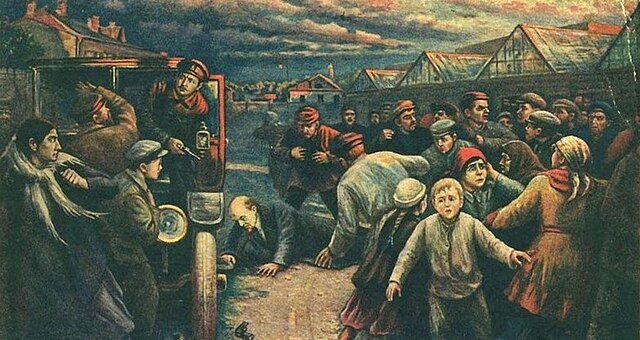The Red Terror was a campaign of political repression and executions in Soviet Russia carried out by the Bolsheviks, chiefly through the Cheka, the Bolshevik secret police. It officially started in early September 1918 and lasted until 1922. Arising after assassination attempts on Vladimir Lenin along with the successful assassinations of Petrograd Cheka leader Moisei Uritsky and party editor V. Volodarsky in alleged retaliation for Bolshevik mass repressions, the Red Terror was modeled on the Reign of Terror of the French Revolution, and sought to eliminate political dissent, opposition, and any other threat to Bolshevik power.
Propaganda poster in Petrograd, 1918: "Death to the Bourgeoisie and its lapdogs – Long live the Red Terror"
Vladimir Pchelin's 1927 depiction of Fanny Kaplan's assassination attempt on Vladimir Lenin
Corpses of hostages executed by Cheka in 1918 in the basement of Tulpanov's house in Kherson, Ukrainian SSR, The Black Book of Communism
Corpses of people executed by Cheka in 1918 at a yard in Kharkiv, Ukrainian SSR, The Black Book of Communism
Political repression is the act of a state entity controlling a citizenry by force for political reasons, particularly for the purpose of restricting or preventing the citizenry's ability to take part in the political life of a society, thereby reducing their standing among their fellow citizens. Repression tactics target the citizenry who are most likely to challenge the political ideology of the state in order for the government to remain in control. In autocracies, the use of political repression is to prevent anti-regime support and mobilization. It is often manifested through policies such as human rights violations, surveillance abuse, police brutality, imprisonment, involuntary settlement, stripping of citizen's rights, lustration, and violent action or terror such as the murder, summary executions, torture, forced disappearance, and other extrajudicial punishment of political activists, dissidents, or general population. Direct repression tactics are those targeting specific actors who become aware of the harm done to them while covert tactics rely on the threat of citizenry being caught. The effectiveness of the tactics differ: covert repression tactics cause dissidents to use less detectable opposition tactics while direct repression allows citizenry to witness and react to the repression. Political repression can also be reinforced by means outside of written policy, such as by public and private media ownership and by self-censorship within the public.

Members of the right-wing Lapua Movement assault a former Red Guard officer and the publisher of the communist newspaper at the Vaasa riot on June 4, 1930, in Vaasa, Finland.





